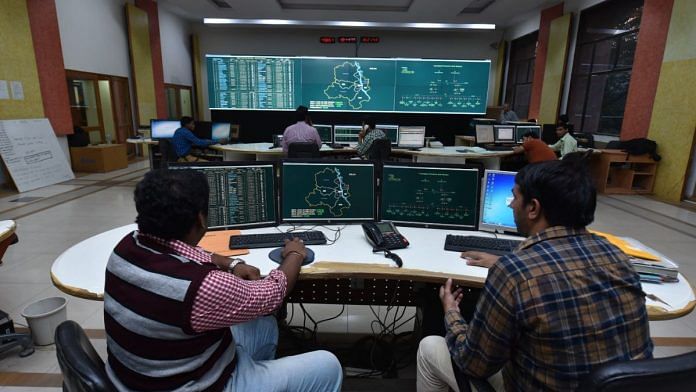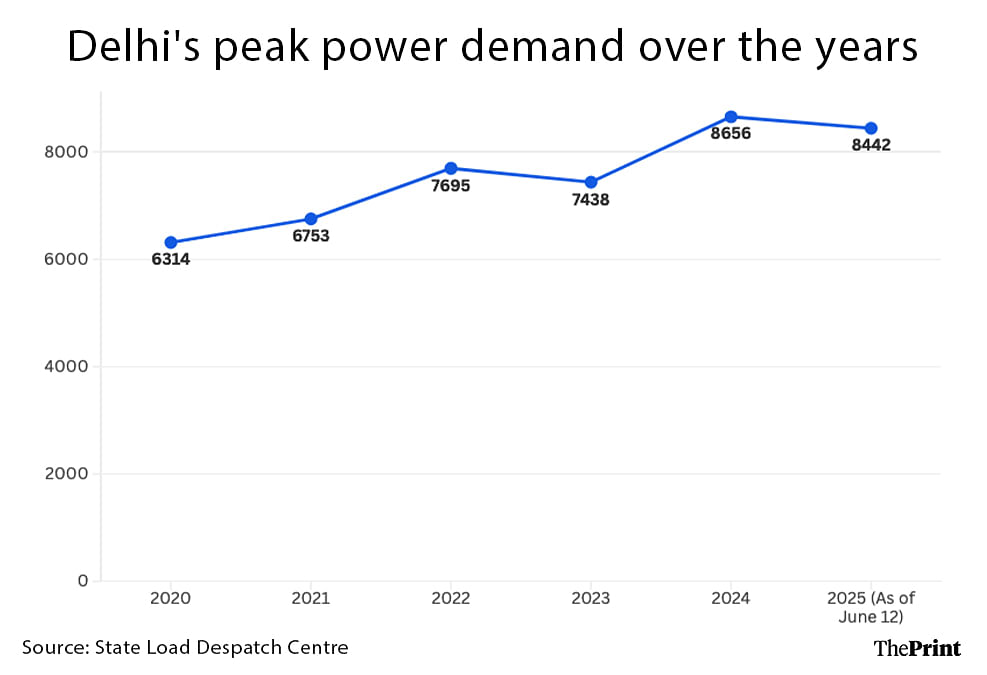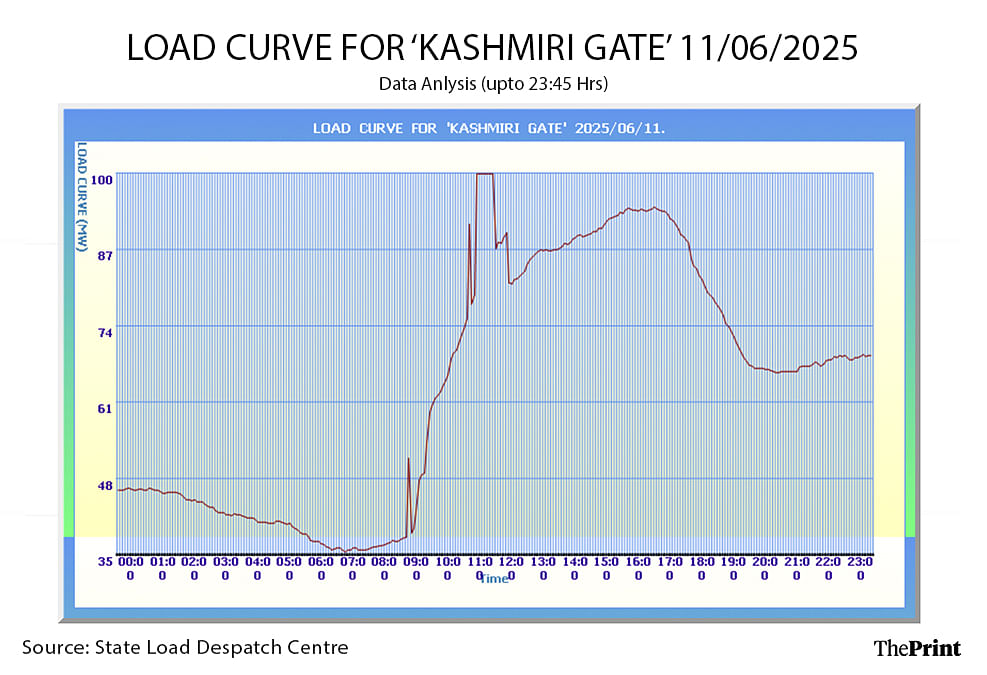The main control room of the State Load Despatch Centre in Delhi’s Savitri Nagar is buzzing with energy – much like the power lines that it controls across the national capital. The one-storey nondescript building off Minto Road is responsible for ensuring Delhi’s 34 million people get electricity in this searing heat. Amid the shuffling files and myriad calls to substations, DISCOM representatives, and local transformer controllers, SLDC engineers always have one eye on the gigantic data screens in front of them.
The control room screens display tiny neon green texts and big atomic clocks with red digits. Every 15 minutes, the screens refresh with the latest information on power demand, data from 47 different substations, and on supply from power plants both in Delhi and other states. It also captures data from transformers across the city. And when a power line trips or fails, officials are immediately alerted.
“Summer vacations might be a thing for most common citizens, but for the SLDC, it is the opposite,” said Rishi Raj, Public Relations Officer at SLDC, laughingly. “Employees are advised against taking leaves in summers because we know it is an all-hands-on-deck situation.”
On 12 June, Delhi recorded the highest power demand of the year at 8442 MW as mercury reached the 40℃-mark. The India Meteorological Department issued a heatwave warning for the week. But it’s not just the weathermen who are on alert. Engineers at SLDC decide if you are able to run the AC or not.
“It’s taken the better part of two decades to finesse this system but I can safely say that this room and this office has every information you may require about all the electricity that enters Delhi and is supplied everywhere,” said Raj.
The SLDC operates 24*7, with its 25-30 employees working in shifts. Their job is to monitor everything from power plants to substations in case of any failure, excessive load in particular substations, or line tripping, which is when power gets cut off in one electricity line due to an accident.
“There are a lot of stakeholders involved in Delhi’s electricity plan, and we are the central link between all of them,” said Raj. SLDC is the apex body responsible for ensuring integrated operation of the power system in Delhi. “From power plants to transmission centres and substations to DISCOMs, we are constantly aware of where the electricity is and how it is being handled.”
Capital’s peak demand this season stood at 8442 MW on 12 June, but according to power distributors and officials from SLDC, it will breach new levels in days to come.
“It will easily cross 9,000 MW this summer in the city, there’s no doubt about it,” said Raj. “But we’re ready for it to even reach 12,000 MW, no stress.”
The team of engineers at SLDC manages the grids, communicates between 46 different substations to prevent oversupply or undersupply in any line, forecasts how much power will be consumed the next day, and provides this information in a timely manner to avoid electricity shortage for key locations.
The National Load Despatch Centre warning in January said that May, June, and July are critical months for high demand and power vulnerabilities. And Delhi’s distribution companies (DISCOMs) and the SLDC are prepared. Armed with AI-powered forecasting technologies, a 24/7 control room tracking the movement of every watt, and a stable power supply, Delhi power authorities are ready to tackle the capital heat.
“We’ve entered into power-sharing agreements with different states and secured at least an extra 500 MW of power for Delhi this season,” said an official from the Bombay Suburban Electric Company (BSES), one of the three private DISCOMs in Delhi. BSES is responsible for providing electricity to almost 2.25 crore residents in South, West, East, and Central Delhi.

Also read: A Hyderabad startup is launching India’s 1st ‘thinking’ satellite. A brain in space
The balancing act
During summers and especially during the peak hours – 3 PM in the afternoons and 11 PM at night – the SLDC engineers can’t afford to take their eyes off the screen. Most of the peak demand in these hours is because of ACs and fans. If an engineer notices a failure in any transmission line, within seconds, they alert the DISCOM to prevent the grid from failing.
“For any electrical grid to be maintained, there needs to be a balance in the frequency of power flowing – it should be 50 Hz at all times,” said Raj. “If there’s too much demand and not enough generation of power, then the frequency lowers and the grid fails. Again, if there’s not enough demand but too much generation of power, then the frequency increases, and again the grid can fail.”
To maintain this balance, SLDC employees coordinate between power plants and figure out how much electricity is required in Delhi’s grid at any time. There are 8 power plants in Delhi that, in total, generate around 661 MW of power, while the rest is bought from other states such as UP, Haryana and Punjab.
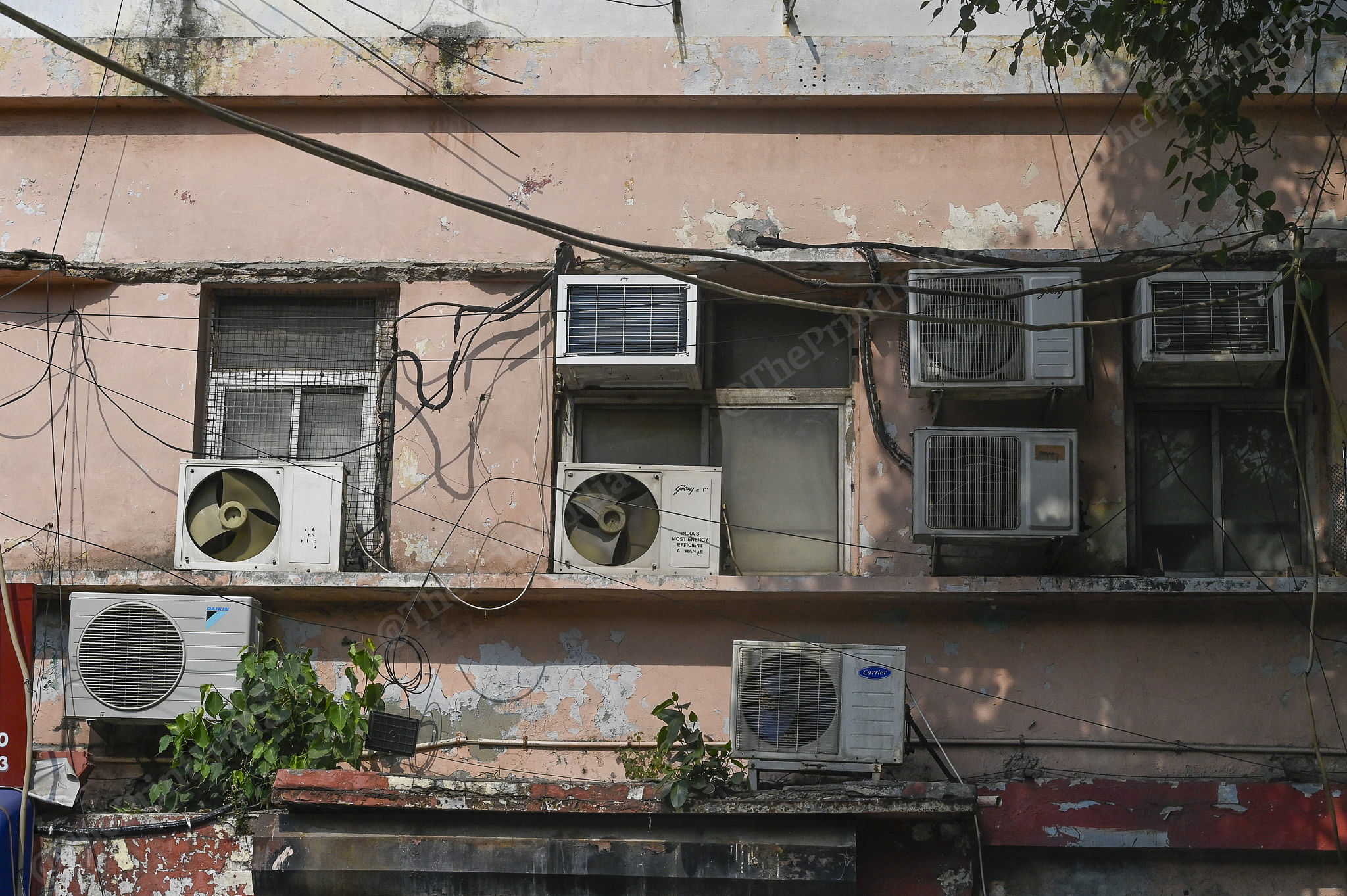
“During winters, sometimes, we even ask some power plants to stop operations and remain on standby, because there’s just not enough demand,” said Raj. “It all depends on how we’ve been able to forecast the demand in the city.”
Also read: Two India-Pakistan surgeons built a medical journal. It’s become an ugly separation battle now
Power forecasting
Looking at the load curves of substations distributed across Delhi, Raj painted a picture of the city’s power demand that went beyond numbers and names. The Preet Vihar substation, nestled in a residential area, reaches its peak load at 11 PM in the night.
“Every night when families come back home and are making dinner, going to sleep, turning on their ACs – that’s when they consume maximum electricity and we see it in the load curve,” he said.
Conversely, he said, the Kashmere Gate substation reaches its peak load at around 10am during the day.
“You can see that the electricity demand in Kashmere Gate begins rising at 9am in the morning, peaks during the day, and comes down by evening when the offices are winding up and shutting down,” said Raj.
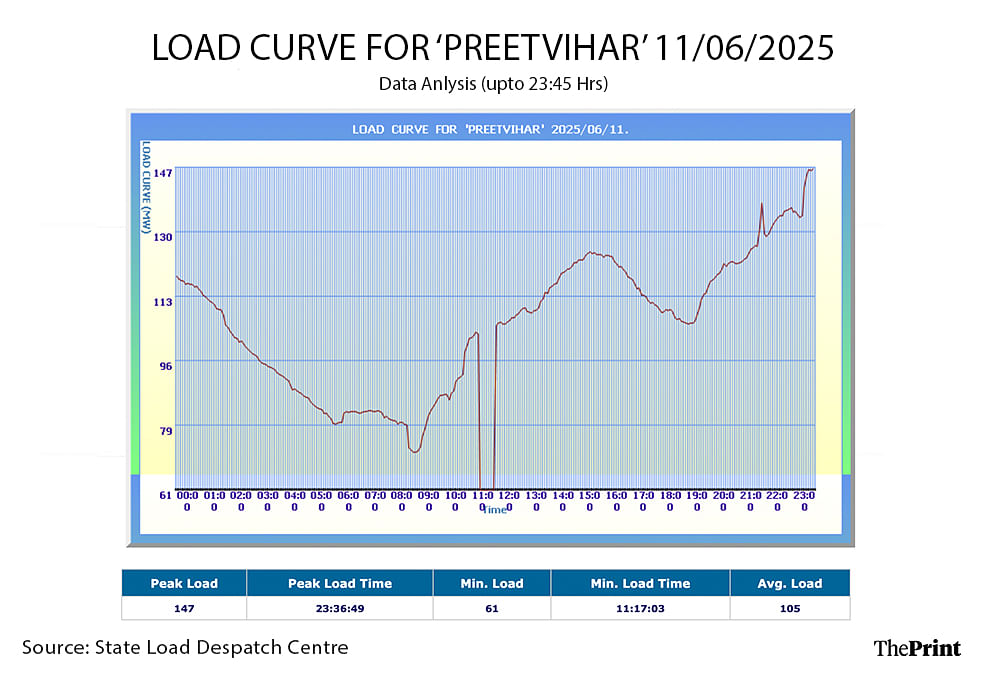 Shyamasis Das, a Fellow in the Energy, Resources & Sustainability vertical of the Centre for Social and Economic Progress (CSEP), said that to be able to cater to the power demand of a city, any DISCOM needs to first accurately forecast the demand.
Shyamasis Das, a Fellow in the Energy, Resources & Sustainability vertical of the Centre for Social and Economic Progress (CSEP), said that to be able to cater to the power demand of a city, any DISCOM needs to first accurately forecast the demand.
“We have a sophisticated model of power forecasting that compiles AI and ML with historic weather data,” said a senior BSES official on condition of anonymity.
BSES has trained the model meticulously on years of data on rainfall, cloud cover, wind speed, humidity, and ambient temperature. The AI/ML system for power forecasting has been used by BSES since 2018 and has improved progressively. While earlier, the forecasting would still be done using the same datasets, it used to be manual and more time-taking than it is now, said another senior BSES official on condition of anonymity.
This forecasting by DISCOMs is assisted by the SLDC, which also predicts power demand at a granular level for each substation. The SLDCs across India rely on the SCADA model for forecasting – Supervisory Control and Data Acquisition. The control room at the heart of every SLDC runs on this SCADA model, which gathers real-time information from every substation that is fitted with a Remote Terminal Unit (RTU).
Unlike a DISCOM that only predicts and gathers data from the regions it supplies, the SLDC is responsible for the entire city’s power demand data. Their RTUs feed the control room information about peak loads and minimum loads, alongside line failures, voltage issues and the change in load as per changes in temperature.
In 2023, the power minister had announced that in every state the SCADA systems will be upgraded with AI systems by 2026, however the Delhi SLDC has not been upgraded yet.
“Every day we see how much power is being consumed overall in the state, but also individually in different substations,” said Raj. “If certain areas, like say Mehrauli or Preet Vihar consume a little more electricity than normal, we keep it in mind for the next day.”
This is done so that the SLDC can give an accurate forecast to DISCOMS and generators of the power required for the next day, in terms of 15-minute intervals. So at the end of every day, the SLDC can predict how the demand for the next day will change every 15 minutes. This extremely granular power planning helps both DISCOMs and SLDCs to plan better and avoid surprise peak loads.
Also read: Life on India’s shiny new expressways—sleeping truck drivers, jugaad, and secret dhabas
Load shedding…
For three days in a row in March, Prakriti Raj, a resident of Kalkaji suffered long power cuts. When she called her local BSES helpline, she was told it was because of a routine maintenance work.
“But how can it go on for three days?” Raj told ThePrint. “They have to think about the people and how difficult it is to be without power in the summers.”
While BSES reiterated that load shedding, i.e., unexpected power cuts, are a rare phenomenon in Delhi this summer, the records tell a different story.
A quick analysis of BSES daily outage reports from May this year shows that a minimum of five instances of power cuts longer than 30 minutes happened every single day of the month, due to line tripping. While some outages were planned due to routine maintenance, more often than not there were line trippings for 30 to 60 minutes due to cable faults in every area from Dwarka and Badarpur to Mehrauli and Hauz Khas.
According to Das, though, Delhi has shown progress in augmenting its network capacity to manage demand and reduce mandatory load-shedding over the last two decades. The issues that may arise now are limited to a local level.
“At the local level when the power demand becomes more than what the existing distribution network can handle, there’s pockets of load shedding,” said Das. “This is why we see some long, unexpected power cuts during summers.”
Raj added, that with an increasing base of customers using heavy electronics such as ACs and fridges, the old electricity lines and transformers in every colony, locality and gully might not be able to handle it.
The government has also proposed standardizing AC temperatures across domestic and commercial-use air conditioners in the country, to only allow temperatures higher than 20℃ and lower than 28℃. This too is a move aimed at reducing the pressure on the grid during peak hours, since even a 1℃ increase in AC temperatures can reduce electricity consumption by 6 per cent.
Also read: What Ashoka University founder wrote to ex-student on the Ali Khan Mahmudabad issue
…and its management
One solution, proposed by Das for managing load shedding for the summer months, is to bring in Time-of-Day (ToD) tariffs. It means electricity pricing is based on level of consumption during certain hours of the day, with peak hour pricing being higher than during other hours. This could help flatten Delhi’s load curve to a certain degree during peak hours, he said.
“These time-of-day (ToD) tariffs already exist for commercial and industrial consumers or any consumer having 10 kW or higher sanctioned load,” said Das. “But because it doesn’t apply for most residential consumers, it doesn’t have an impact on reducing demand during peak hours.”

The benefits of this regime, even if rolled out in a staggered manner, would be far and wide. Not only will people be incentivised to use less energy during peak hours because of the high prices, they could also be encouraged to use it during the daytime i.e, hours when solar energy is also adding to the grid.
“There needs to be a fundamental shift in the way and time when peak power demands occur, because our grids need to factor in renewable energy,” said Das. “More and more people will get their electricity demands fulfilled, but it will also happen in a sustainable, green manner.”
(Edited by Anurag Chaubey)



